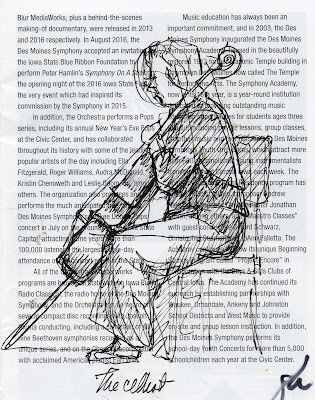Many who make art, whether drawing or painting or sculpture, owe something to Paul Cezanne (1839-1906}, the great French painter of the late 19th century. Scholarship in the history of art suggest that it was his work, more than most, that broke the traditions of representative and realistic art. Writers as diverse as Ernest Hemingway and Emil Zola explored his importance. Painters like Picasso and Henri Matisse (who famously said Cezanne was "the father of us all") were profoundly influenced by him. His work hangs in major museums worldwide. And yet I don't like his work.
 |
| Paul Cezanne |
That's right, I don't care for the majority of Paul Cezanne's oeuvre. His early works were dreadful both in execution and content, involving themes of abduction, murder, and rape. Although he attended life drawing groups and had some minimal instruction, he really had no formal training. Refused entry to the Ecole des Beaux Arts in Paris, he went his own way, in much the same way as Vincent van Gogh. And it shows. Neither of these two giants in the history of art drew figures fluently or even accurately (see "The Card Players,"or "The Bather," below, for example), and Mr. Cezanne in particular had difficulty with traditional perspective. Mr. Cezanne's sense of color always seems a bit off, too, particularly his greens which to my eye are bilious or acid.
Nevertheless, the unlikely Paul Cezanne has been a profound influence. It may be argued that his breaking of traditional perspective, off-key color choices and the rest were intentional, but the counter argument is his lack of formal training. Regardless, the influence of his work is undeniable.
 |
The Card Players, 1894
|
 |
The Bather, 1885
|
 |
Modern Olympia, 1870
|
Why such work was and is influential has little to do with its attractiveness. Works by Claude Monet, now revered, were called ugly during his lifetime, but as understanding of his aims in painting them became apparent they were hailed. The thing is, Mr. Monet knew what he was doing while Paul Cezanne may not have done. In fact, his wife said, after his death, "Cezanne didn't know what he was doing." Of course she may have meant that he didn't know what his work was doing in the world of art, but that seems unlikely. Nevertheless, the works have been widely praised. Writers discuss his search for form, his breaking of perspective, his vigorous brush, and more. A number of movements in art--Cubism, Fauvism for two examples--owe a great deal to his work. Even so, to my eyes his work is hardly attractive and certainly not beautiful. The colors are odd the figures inaccurate, the perspective often skewed. And yet.
And yet Mr. Cezanne undoubtedly influenced the work of many who came after. His skewed and broken perspective gave life to Cubism. His colors and planes opened a path to Fauvism and the work of Henri Matisse. And from there his ideas in paint echo through the decades.
 |
Apples, 1878
|
 |
Pyramid of Skulls, 1901
|
Nonetheless, Mr. Cezanne's work is not pretty, not like much of
Impressionism. Instead the work demands that you stop and study. Perhaps
he did in fact know what he was doing and his lack of training meant he
didn't have to absorb and then unlearn any of the classicist training of many of his
peers. Or maybe his lack of training made for distorted figures, different and more odd brushwork, unusual colors and the lot. Regardless, all that remains is the work--arresting, un-pretty, highly influential. So who cares if he knew what he was doing or not.




















